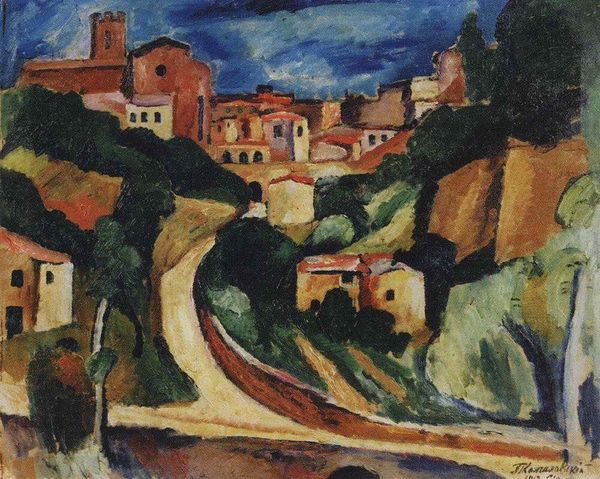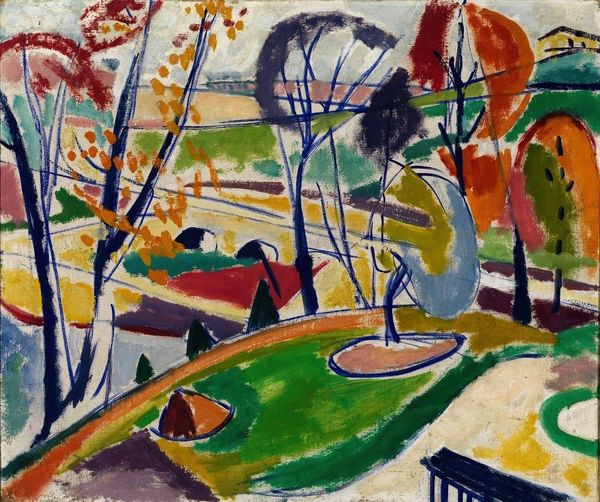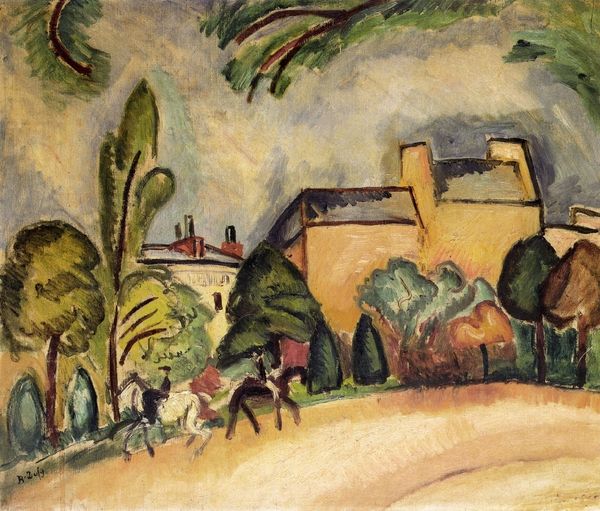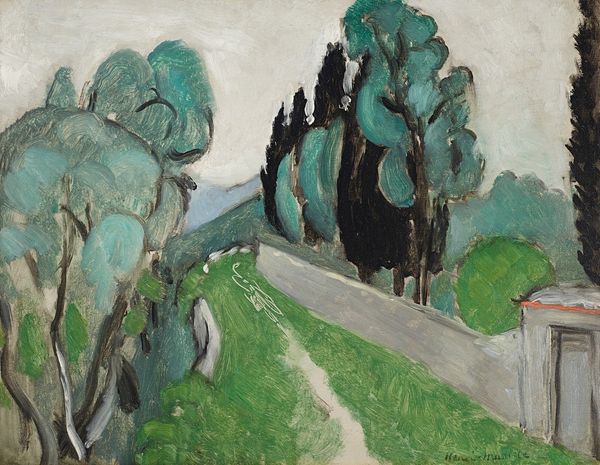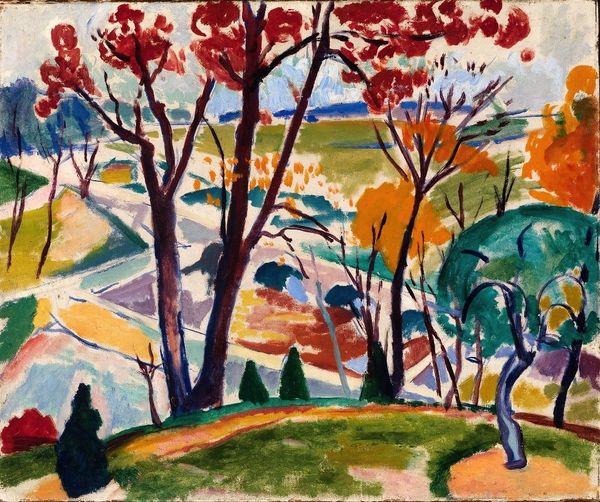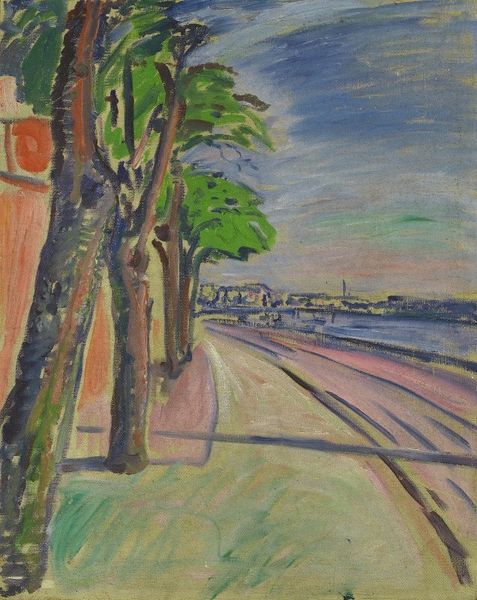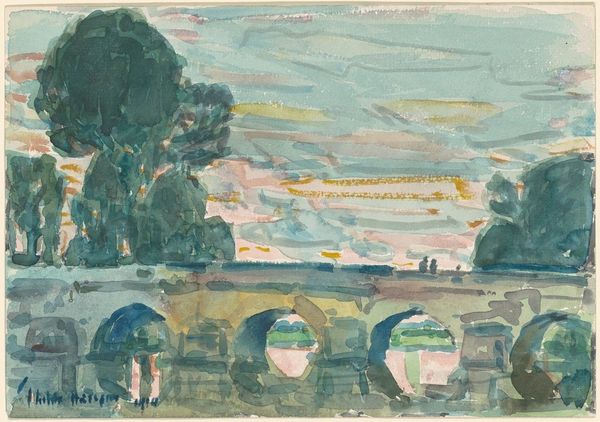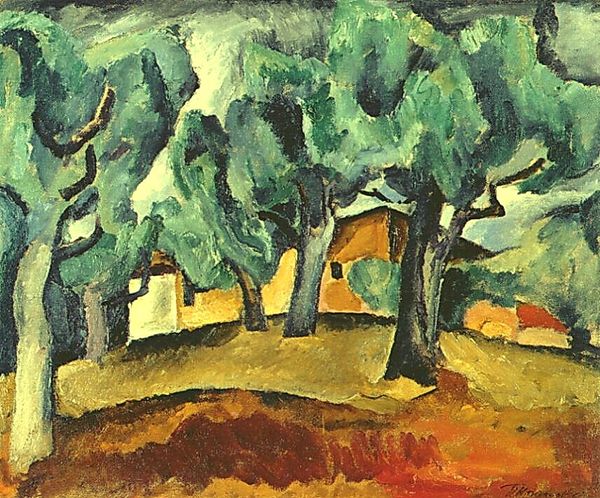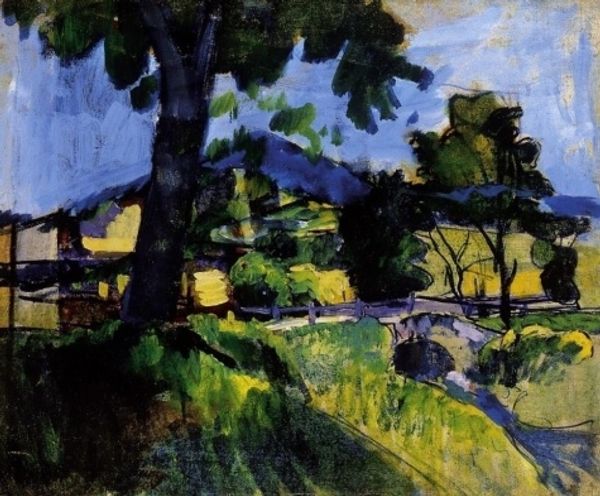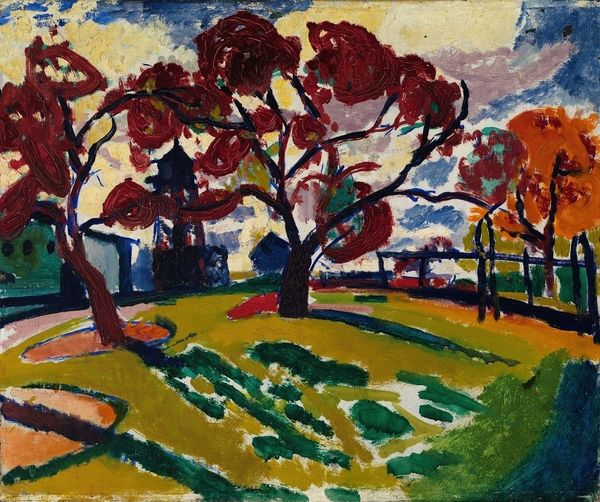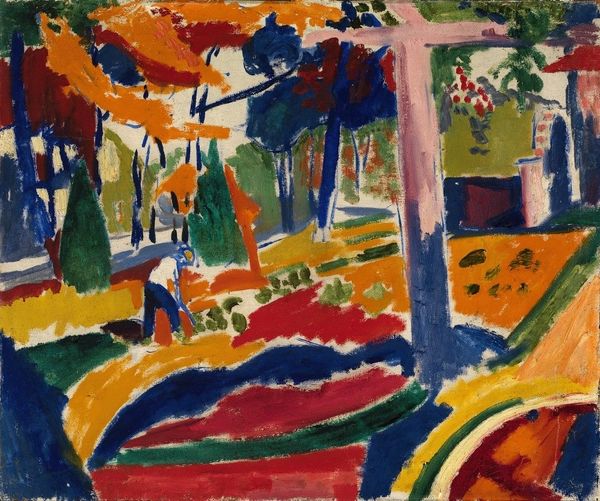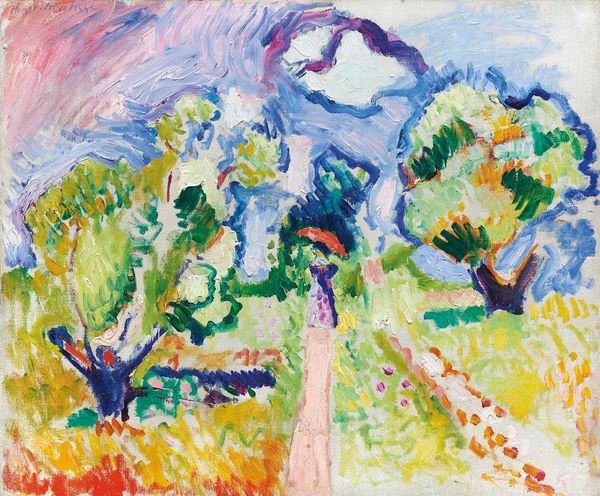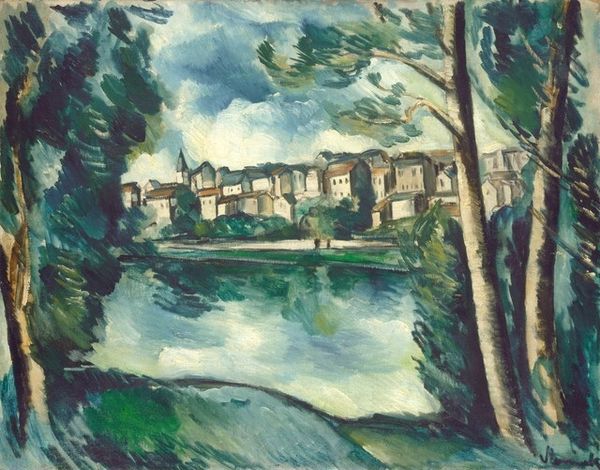
Dimensions: 89.5 x 55 cm
Copyright: Public domain
Curator: Max Beckmann's oil painting, "Railway Bridge and Rainbow," completed in 1942, presents us with a complex interplay of nature and industry. It's currently held in a private collection. What’s your immediate read on this landscape? Editor: Stark. Foreboding, almost. The vibrant rainbow seems at odds with the weighty forms and muted tones of the rest of the composition. It creates a rather disquieting tension. Curator: Precisely. Notice how Beckmann has structured the piece. The railway bridge cuts diagonally across the canvas, creating distinct zones within the picture plane. This division could be interpreted as a symbolic barrier. Editor: I see that division quite clearly. The rainbow itself is, of course, a potent symbol – hope, promise, a bridge between worlds. Its ethereal quality contrasts with the solid, almost brutal presence of the bridge. Is the bridge a representation of the human realm, and is it separate to nature’s promise? Curator: An interesting read. Considering Beckmann was painting during the Second World War, the rainbow could indeed symbolize a yearning for peace amidst destruction. However, the architectural components suggest this is not just an untouched Eden – it's been developed and mechanized. And then observe how the chromatic intensity is heightened and focused. Editor: A potent detail. The rainbow appears to originate not naturally from the rain, but seemingly manufactured, channeled into the bridge itself. It becomes almost an ironic commentary, on manipulating even nature's beauty. Curator: Indeed. Beckmann's use of line contributes significantly to the artwork's overall mood. Notice how the hard, defined edges create a sense of confinement and unease. What kind of mood would you say Beckmann wants to elicit? Editor: In regards to iconography, the locomotive's train billowing clouds near bare trees evokes the transience of existence and the shadow of conflict, making the rainbow above seem a false beacon. The scene overall is somewhat jarring; something doesn't feel right, perhaps that's intentional. Curator: The formal structure mirrors the thematic complexity, creating a visually arresting statement that is still, to this day, quite enigmatic. Editor: Beckmann's skillful manipulation of familiar symbols really urges viewers to consider their significance during a particularly tumultuous historical moment.
Comments
No comments
Be the first to comment and join the conversation on the ultimate creative platform.
